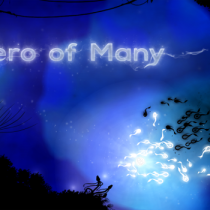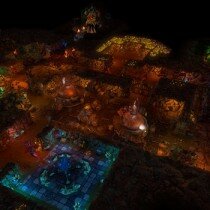In our Defining a Generation series we take a look back at the current gaming generation as the new one arrives. We will be spotlighting the titles that really made this generation what it was. These games, whether top sellers or frustrating disappointments, from the sublime to the ridiculous, will have one thing in common; they embody, in part, the essence of what this gaming generation stood for; what made it unique. Join us as we take a magical mystery tour of the 360/PS3/Wii generation!
Every generation has its outlier, its black sheep of the family. There’s always that game that doesn’t conform to the standard; a game that just doesn’t fit in. For this generation that game was Mirror’s Edge, which ran, slid and jumped away with many a gamer’s heart with unique take on first-person gaming.
Developed by EA Digital Illusions CE (DICE) and published by Electronic Arts, Mirror’s Edge was released amid much anticipation in November 2008. The game had been cleverly hyped following its announcement in September 2007, with minimal details being provided short of a teaser trailer and a few other things.
The first thing that stood out was the visual style, with a blooming, saturated colour scheme. Unlike the dark, industrial and, let’s face it, mainly brown FPS games of the time, Mirror’s Edge was bright and shiny, almost overexposed, mimicking the kind of light style seen at high altitudes in sunlight.
The clever integration of red to signal suggested routes for progression was a nice touch, allowing action and movement to flow rapidly without intruding on the sense of disbelief.
Pretty distinctive visualsAnd the gameplay; oh the gameplay. The very definition of marmite gaming, Mirror’s Edge’s core mechanic was first person parkour running, with athletic and acrobatic traversal of the game world being the modus operandi of our protagonist Faith. It’s hard to stress quite how much of a sea change this was, especially for a first-person perspective game. Just think about the range of movement in any given AAA FPS game, where if you’re lucky your super-athletic character can jump about 2 foot and maybe, just maybe, crouch. Compare this to Mirror’s Edge, where you could, nay HAD, to run, jump, roll, wall climb, slide and generally bounce around like a rubber ball in a washing machine just to get through. This game brought Prince Of Persia-style platforming to the FP dance.
Oh and you could see your feet. This might not seem like much, but this was hitherto unknown in FP games, where looking down seemed to suggest your character floated everywhere as a disembodied torso of destruction. Come to think of it, the movement kind of supported that too…
Hey look! Feet!The problem for many was that the gameplay was, if we’re being charitable, challenging and, if we’re being harsh, goddamn unforgiving. This was not a game for players who hate repetition, as it saw you regularly re-trying the same section after the fifteenth undignified plummet to the pavement below that half hour. The thing is; this same thing that turned off many players was what made its fans love it so much. The real glory in the game is to finally, after umpteen failed attempts to get from A to B in a manner just so, you finally manage to pull it off. There are few games, other than maybe the Guitar Hero/Rock Band, games that make you feel so damn badass in such a non-violent way.
And non-violent is certainly a key description of the game. While, yes, there are armed goons for you to contend with and, yes, you can disarm them and, yes, you can use those same guns on the goons in a fabulous bit of Schadenfreude, but the game gives an almost derisory feel to it; like having to resort to gunning down your opponents is somehow crude. ‘How very crude’ the game seems to be saying as you dispatch a guard. Hell, the fact that the shooting mechanics feel so unrefined seems to be deliberate. It’s almost as if DICE have intentionally made the shooting unfulfilling and unresponsive to make a point. Well, that or they just didn’t put much work into it as you’re not meant to use it. Indeed, the game even has an achievement for completing the game without killing a single enemy. I can’t think of another game with an achievement like that, never mind a first-person title! I can visualise the COD & Battlefield players frothing at the mouth at that one.
Oh come on! Shooting someone? That’s just lazy!While Mirror’s Edge is by no means a perfect game and I can concede that many of the criticisms levelled at it by its detractors are perfectly valid, the game is about as close to a cult classic as the generation had. We love it for the very things others hate it for. We love the unforgiving perfectionism required to truly appreciate it, we love the challenge of abstaining from the available weapons and, above all, we love the volatile motion of the first-person parkour.
Mirror’s Edge won’t go down as the best game of this generation. It’s not going to be remembered for its story, spectacular cut scenes or even, really for being a great gaming experience. What it will be remembered for, if there is any justice in this world, is for reminding us all that there can be more to the FPS genre and, by extension, all genres than what is seen as standard.
For that, if nothing else, Mirror’s Edge deserves recognition and helped define this generation of gaming.
© 2013 – 2014, zero1gaming.com. All rights reserved. On republishing this article your must provide a link to this original post
About Paul Izod
Paul Izod is a lifelong gamer. Since he was old enough to tap at his Dad's PC's keyboard he's been a gamer. Dedicated and often opinionated, you can be sure he'll always have something interesting to say about the subject at hand. Find him on Twitter at or or email him at
•




